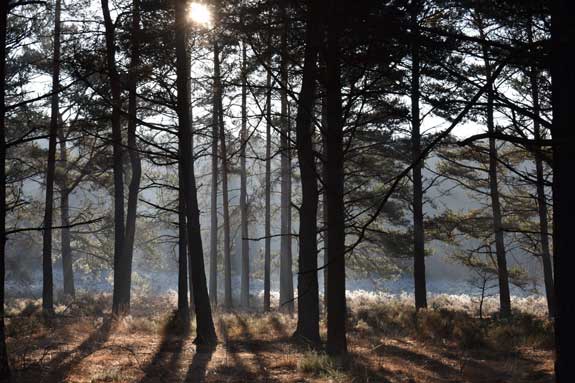History
Horsell Common History
2005 marked the bicentenary of the Parliamentary Act that first saved and established Horsell Common. In 1805 the Pyrford and Chertsey Enclosures Act stated a specific exception for “Commons and Waste Lands within the Parish of Horsell”. At that time thousands of common land areas were being enclosed to create much-needed agricultural land but the owner, the Earl of Onslow, ensured that Horsell Common was saved by being exempted. Due to the costs and difficulties of maintaining common land, the Horsell Common Trustee Management Scheme was set up in 1910 which led to the formation of the Horsell Common Preservation Society (HCPS).
In 1947 the lease of Horsell Common was officially signed over to HCPS and in 1959 the Society became a registered charity. In 1966 HCPS purchased the freehold of the Common’s main 748 acres 2 rods and 15 perches for £1 an acre. Upon aquiring ownership, the Society applied to have the land formally recognised as registered common land to preserve public access in perpetuity. The importance of the Common for nature conservation was recognised by its designation as a Site of Special Scientific Interest (SSSI) in 1979. Many birds characteristic of heathland breed within the site including nightjar, Dartford warbler, woodlark, woodcock, stonechat and grasshopper warbler. In 2005 the Common gained a new international status as a Special Protection Area (SPA) under the European Birds Directive.
Since 2010 there has been the addition of McLaren Park and Mimbridge and Bourne Meadows being designated as a SANG (Suitable Alternative Natural Greenspace).
These meadowlands offer an alternative area for recreation and help to take some of the pressure off the more fragile heathland landscape. At the same time, the Wetlands area, Heather Farm Café and a large car park were developed. HCPS also worked with Woking Borough Council and English heritage to restore the Muslim Burial Ground.

Today, the woodlands of Horsell Common play a key role in providing green space in this busy part of Surrey as well as safeguarding the remnants of historic heathland habitats and landscapes.
Open heathland on sandy, acidic soil was once common in the South of England but gradually it has disappeared as towns have expanded. There has been a corresponding loss of flora and fauna which once flourished in this special ecosystem. Active management is key to keeping this special ecosystem and habitat in good condition.
Did you know
In 1966 HCPS purchased the freehold of the Common’s main 748 acres 2 rods and15 perches for £1 an acre.

When visiting Horsell Common, be sure to check out The Heather Farm Cafe.
